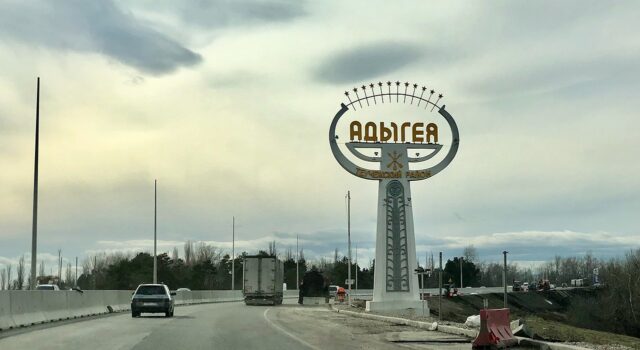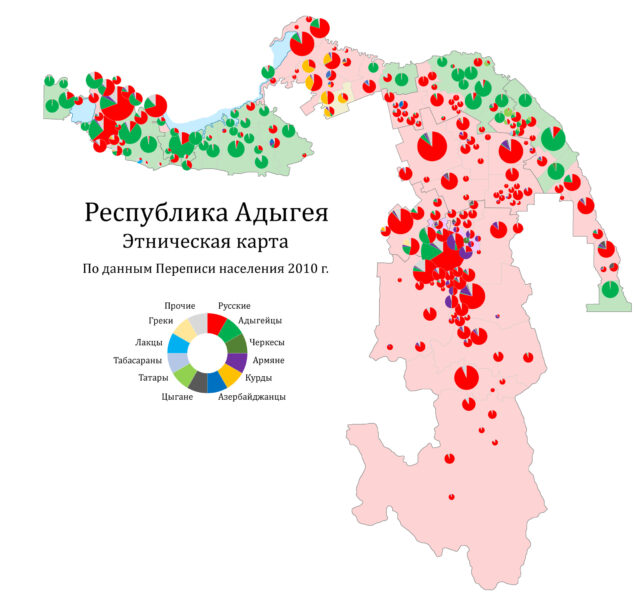Increased investment in Adygea confirmed the Kremlin’s strategy in the North Caucasus

Geopolitical Report ISSN 2785-2598 Volume 29 Issue 12
Author: Giuliano Bifolchi
Increased Russian investments in Adygea confirm the Kremlin’s strategy to implement the North Caucasus’ socioeconomic development and transform the region into a logistics hub supporting the diversification of Russian exports.
The Minister of Economic Development and Trade of the Republic of Adygea, Zaur Sheudzhen, reported that in 2022 the volume of investments in the country’s economy increased by 14.3% compared to 2021 and amounted to 46.5 billion rubles. Over the past five years, about 200 billion rubles have been invested in the region’s economy.
The authorities of Adygea associate further growth of investments with the implementation of two flagship projects: the creation of the industrial park “Enem” and the all-season ski resort “Lagonaki”, “which should give a serious impetus to the development of the republic’s economy.
At the same time, according to Zaur Sheudzhen, attracting new investments depends on the availability of local energy infrastructure. The ongoing work with the companies Gazprom and Rosseti will improve the energy supply of the republic’s territory and give impetus to the implementation of investment projects and the development of the tourism sector in the region.
As the Head of the Republic, Murat Kumpilov, reported earlier, speaking with an annual report on the results of the work of the regional government, investments in the construction of the Lagonaki resort will exceed 60 billion rubles. The project is implemented through private and public investment, divided into several stages. By the end of 2024, 25 km of slopes and hotels with 642 rooms will be built in the first stage.
Last year, 206 million rubles of federal funds were allocated for constructing roads and networks of electricity, gas, water supply and sanitation in Adygea. This year it is planned to allocate 3.8 billion rubles.
The geopolitical scenario of the Republic of Adygea
Adygea is a republic in the southern part of Russia in the North Caucasus region. The geopolitical significance of Adygea is due to its strategic location, resources, and ethnic composition, which have been a source of conflict for centuries.
Adygea is strategically located at the crossroads of Europe and Asia, making it an essential link between the two continents. This location has been a source of conflict for centuries, as different powers have tried to gain control of the region, including the Ottoman Empire, Persia, and Russia. Adygea’s location also makes it a vital transit point for natural resources, such as oil and gas, which creates unique geopolitical challenges for the region.
The ethnic composition of Adygea plays a significant role. Adyghe, the indigenous people of Adygea, have always struggled for recognition and autonomy within the more significant Russian state. The complex ethnic composition of Adygea has led to several conflicts, including the Circassian wars of the 19th century and more recent tensions between ethnic Adyghe and Russians.

Adygea is rich in natural resources such as coal, oil, gas, and timber. These resources make Adygea a valuable asset for Russia as it seeks to expand its economy and maintain its position as a global power. However, exploiting these resources has led to environmental degradation, social dislocation, and inequality, impacting the region’s overall stability and security.
Adygea forms part of the North Caucasus region, known for its instability and potential for conflict. The region has experienced several conflicts and insurgencies, including the First Chechen Conflict (1994-1996) and the Second Chechen Conflict (1999-2009), which have had spillover effects on other regions, including Adygea.
Since 2010, the Kremlin has promoted a strategy to support regional socioeconomic development and contrast local militancy and terrorist organisations. Therefore, in the last decade, the number of violent attacks has decreased while local governments cooperating with the Russian central authority have promoted the construction of different infrastructures in tourism, transportation, and industry.
One of the key elements of Russia’s socioeconomic strategy in the North Caucasus has been to promote regional investment and development. The government has launched several initiatives to boost economic growth, including creating special economic zones, tax incentives for businesses, and developing infrastructure such as roads, airports, and ports. These efforts have helped attract foreign investment to the region, particularly from Turkey and Iran.
Another essential element of Russia’s strategy in the North Caucasus has been to address the root causes of the region’s instability. This has involved a range of measures, including increased security measures, efforts to combat corruption and investment in education and social services.
In recent years, the government has also launched a series of initiatives to promote inter-ethnic dialogue and reconciliation, including establishing a North Caucasus Inter-Ethnic Council and creating a national strategy to develop the region’s indigenous peoples.
Why does it matter?
Adygea’s geographical location, ethnic composition, natural resources, and place in the North Caucasus region make it an essential player in the geopolitics of the greater region. The region’s complexity requires a nuanced approach that considers the unique challenges and opportunities presented by Adygea’s geopolitical significance. Maintaining stability and addressing the underlying conflicts will be essential to ensure the region’s security and development.
Looking at the region, Russia’s socioeconomic strategy in the North Caucasus has been a complex and multifaceted effort to address the region’s many challenges while promoting economic growth and stability. While there have been some successes, particularly in economic development, the region still faces some serious issues. In the future, it will be necessary for the government to continue to invest in the region while also addressing the underlying social and political issues that have contributed to instability and conflict in the North Caucasus.
Since the beginning of the Ukraine conflict, the Kremlin has invested in the development of the North Caucasus, and thus also in Adygea, to improve regional stability, increase local socioeconomic development and transform the area into a connected logistics hub with Eurasian markets.
